Two million commercially insured Americans diagnosed with major depression are not seeking any treatment

More than nine million commercially insured Americans have been diagnosed with depression - a number that has climbed 33 percent since 2013. In fact, 89 percent1 of Americans adults say that depression is a very serious or somewhat serious condition. However, two million of those diagnosed in 2016 did not seek treatment. As a growing number of pharmaceutical and behavioral therapeutic options become available, it’s critical to connect people with the individualized treatment that works for them.
Major depression treatment of commercially insured Americans
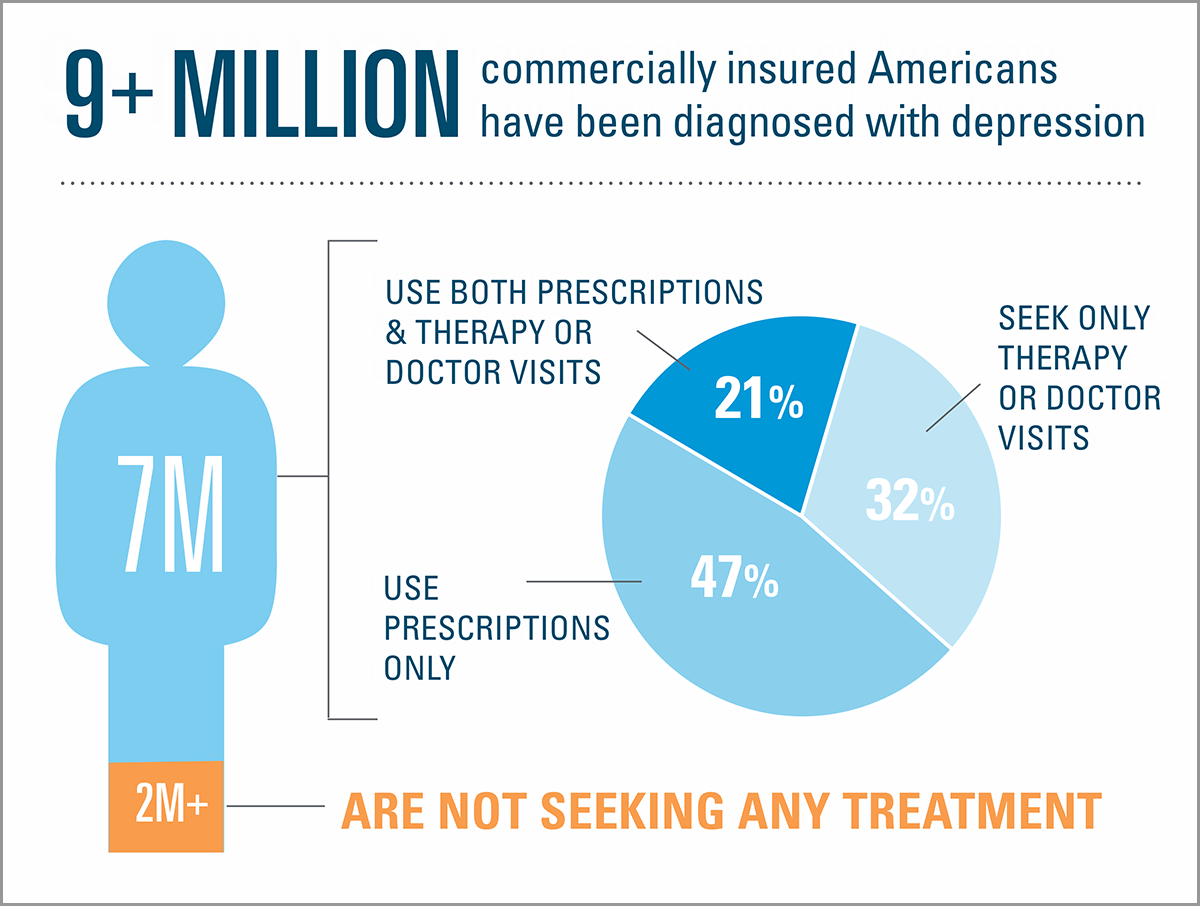
More than 9 million commercially insured Americans have been diagnosed with depression. Of those, 2 million are not seeking any treatment. Among the 7 million that do seek treatment, 47 percent use prescriptions only, 32 percent seek only therapy or doctor visits, and 21 percent use both prescriptions and therapy or doctor visits.
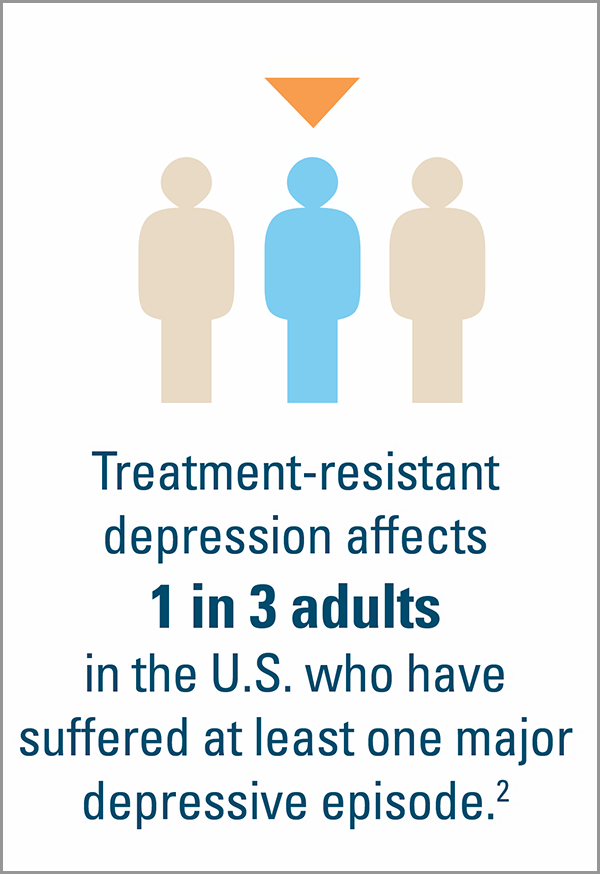 The majority of Americans (56 percent)1 think we’re not allocating enough resources
The majority of Americans (56 percent)1 think we’re not allocating enough resources
Treatment-resistant depression affects 1 in 3 adults in the U.S. who have suffered at least one major depressive episode.
Vincent G. Nelson, M.D., vice president of medical affairs, Blue Cross Blue Shield Association (BCBSA) says treating major depression is complicated. “It’s important for patients to be able to find the right balance of treatments that work best for them, whether that’s therapy, prescription antidepressants or a combination.”
“As more Americans, especially millennials and adolescents, are diagnosed with major depression each year, it’s increasingly important that there’s continued research and resources allocated towards new ways to treat depression," he adds. "The more options there are, the greater the likelihood is that we can find the right course of treatment for each person suffering from major depression.”
Younger people are more likely to think there are not enough treatment options1
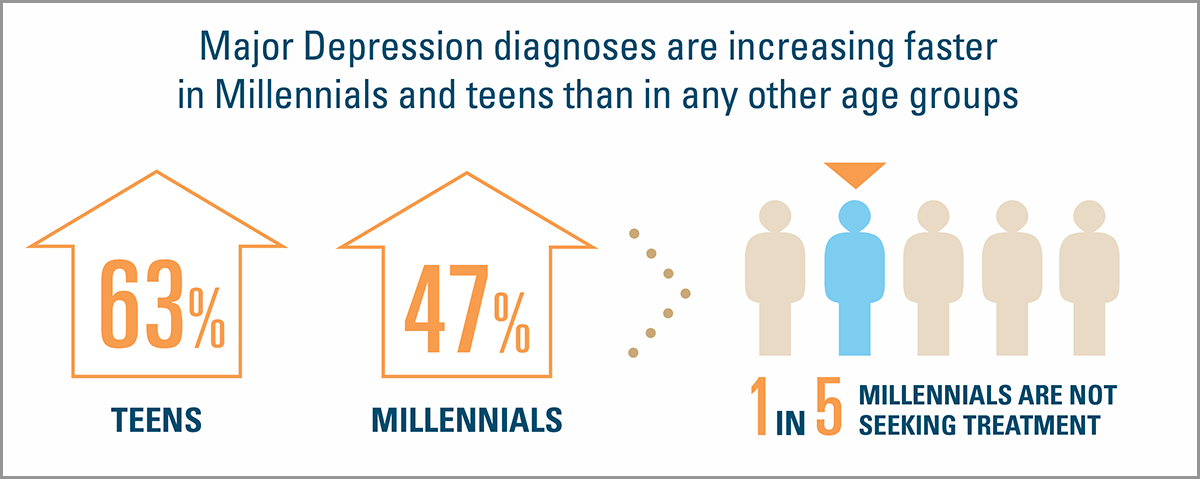
Major depression diagnoses are increasing faster in millennials and teens than in any other age groups. Diagnoses have increased 63 percent in teens and 47 percent among millennials. 1 in 5 millennials are not seeking treatment.
Most Americans with major depression also have one or more serious chronic health conditions
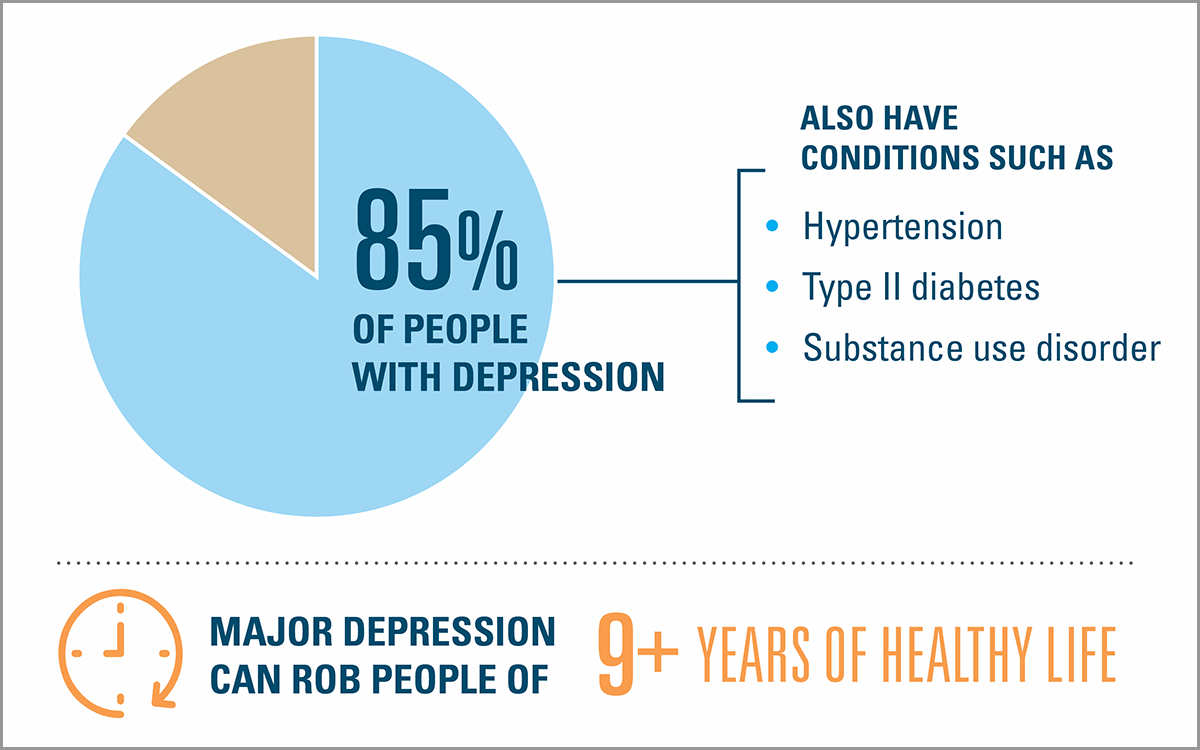
85 percent of people with depression also have conditions such as hypertension, type 2 diabetes, or substance abuse disorder. Major depression can rob people of more than 9 years of healthy life.
Many Blue Cross and Blue Shield companies are increasing access to behavioral therapy for depression and other conditions
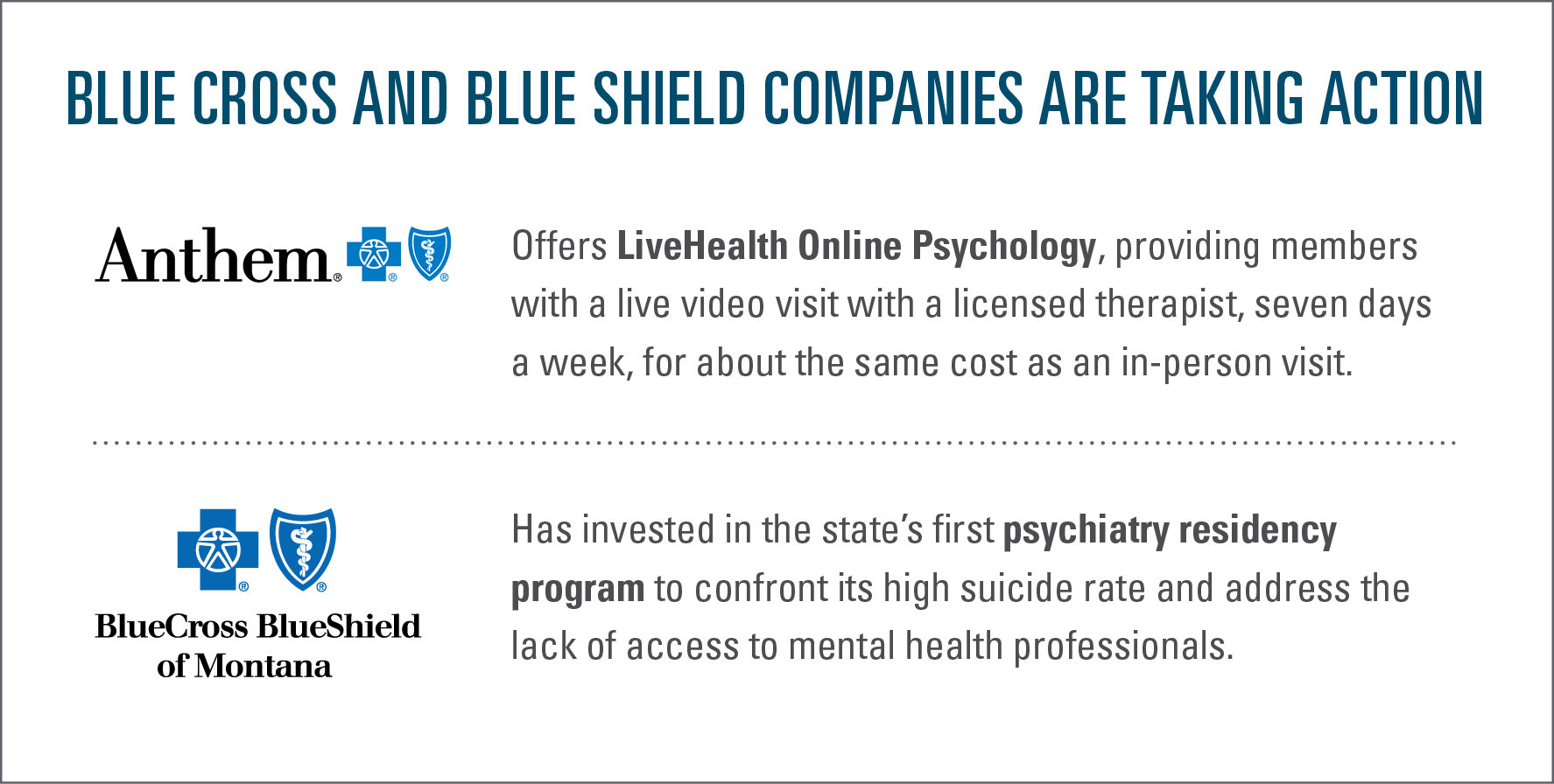
Blue Cross and Blue Shield Companies are taking action. Anthem offers LiveHealth Online Psychology, providing members with a live video visit with a licensed therapist, seven days a week, for about the same cost as an in-person visit. Blue Cross Blue Shield of Montana has invested in the state's first psychiatry residency program to confront its high suicide rate and address the lack of access to mental health professionals.
Where to find help
Always call 911 in an emergency. If you’re worried about depression, you can: learn more about depression from the National Institute of Mental Health; contact your doctor; or ask your health plan about the behavioral health resources available to you.
*Information above found within the Blue Cross Blue Shield, The Health Of America Report® examines U.S. commercially insured members diagnosed with major depressive disorder (major depression) and uses the breadth and depth of data available through the Blue Cross Blue Shield Health IndexSM.
Blue Cross Blue Shield, The Health Of America Report® The Blue Cross Blue Shield (BCBS) Health Index is a unique health metric that provides a better understanding about which diseases and conditions most impact Americans’ overall quality of life. The BCBS Health Index identifies more than 200 health conditions and quantifies how each condition affects Americans’ health, life expectancy and well-being. Powered by data from more than 41 million BCBS commercially insured members per year from birth to age 64, this extensive resource brings an unmatched contribution to other available health data to support national and local discussions about how to improve healthcare in the U.S. For more information about the BCBS Health Index go to https://www.bcbs.com/the-health-of-america/health-index/national-health-index
- IPSOS Public Affairs e-Nation survey conducted February 27, 2019 on behalf of The Blue Cross Blue Shield Association. N= 1,005
- Dialogues Clin Neurosci. 2015 Jun; 17(2): 111–126. Pharmacological approaches to the challenge of treatment-resistant depression.
